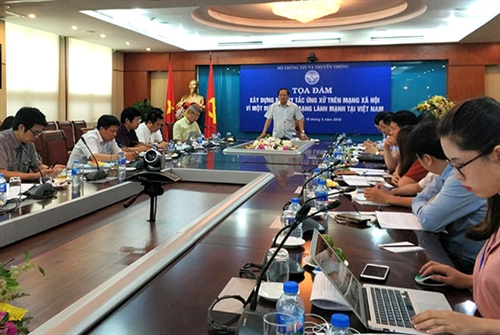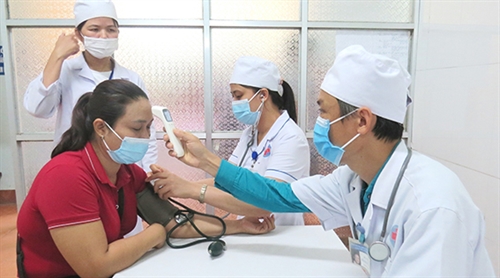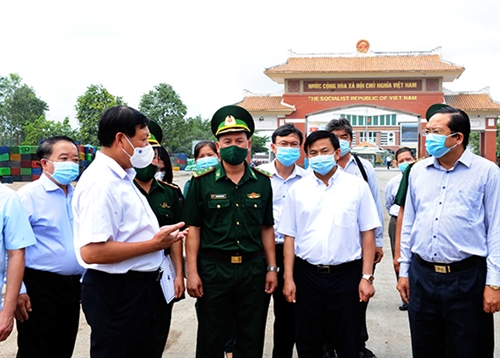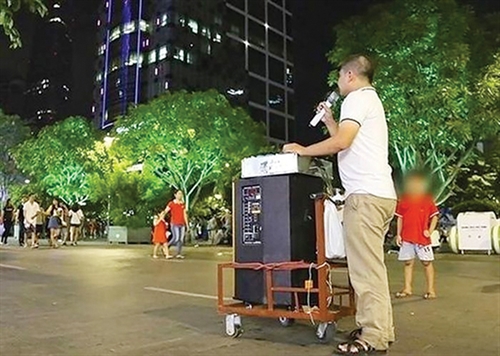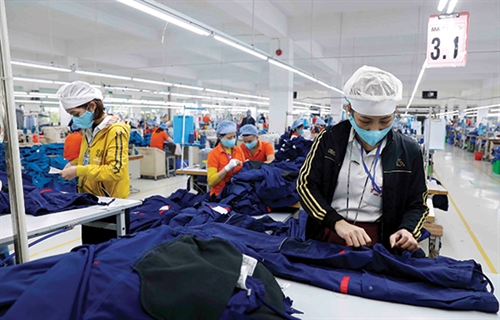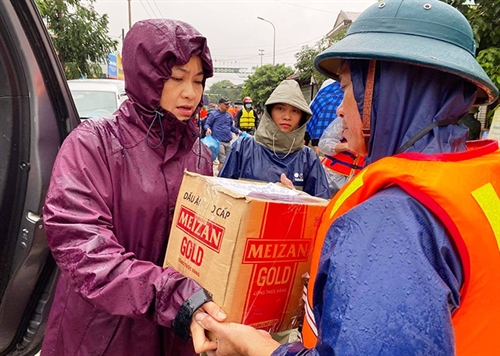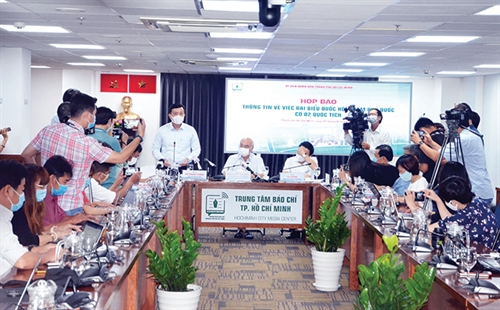Pham Ha Thanh
University of Queensland
Technology and artificial intelligence (AI) have evolved to the point where autonomous vehicles (AVs), particularly autonomous cars - a new generation of vehicles that are capable of operating without direct human control, will likely be a common sight on roadways in the near future.[1] There is a presumption having been proved in the reality: “Cars crash. So too will autonomous vehicles” (Marchant and Lindor). Most recently, a fatal accident involving a driverless 2019 Model S Tesla car occurred in the U.S. on April 17, 2021, killing two men, one was in the front passenger seat and the other in the rear seat.[2] This gives rise to a central legal issue, also one of the biggest roadblocks holding off the rapid development of AVs: AVs liability risks - How will liability be evaluated when an accident is caused by robo-cars?
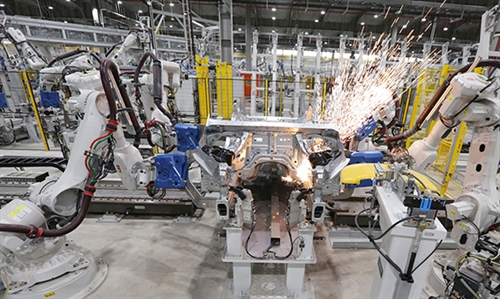 |
| A robotic welding system of VinFast automobile factory in Hai Phong Photo: https://vingroup.net/ |
| Photo: https://vingroup.net/ |
Levels of autonomy
A conventional vehicle accident is often attributable to one or a combination of the following causes: the driver, the vehicle defect, or the natural conditions such as road configurations, weather conditions.[3] Liability is allocated to the two first factors in most instances. It is likely different when it comes to the determination of AVs liability. This is subject to a distinguishment between partially AVs and fully AVs.[4]
In 2014, the Society of Automotive Engineer (SAE International) categorized AVs into six levels of driving automation, ranging from 0 to 5.[5] This is now the standard widely adopted. Six levels of autonomy are divided into two groups:
Levels 0 through 2: Human driver monitors the driving environment and performs dynamic driving tasks. For Level 2, the execution of steering and acceleration is performed by the system, but the driver must remain engaged with the driving task at all times.Levels 3 through 5: Autonomous driving system monitors the driving environment. The driver is not driving but still taking the wheel when requested. Reaching Level 5, AI does all the driving in all situations and human can even go to sleep.For the time being, there is no robo-cars at Levels 4 and 5 commercially available for sale.
AVs-related liability
Prior to the launch of AVs, it was human drivers to cause most accidents involving conventional vehicles. In common law countries, a negligence claim was often brought against the drivers simply because the drivers automatically owe road users a duty of care. A lawsuit brought as a product liability claim for vehicle malfunction against a manufacturer could also be an option. The launch of AVs will bring about a shift from a compensation regime for conventional driving that relies on negligence, to a compensation regime for automated driving that implicates product liability (Marchant and Bazzi).[6] Similar is the approach by Schellekens, where two types of AVs liability are concluded: product liability of a manufacturer; and traffic liability of a vehicle driver.[7]
Another regime of liability is strict liability, which is imposed on a certain party without consideration to reasonableness or fault. While strict liability could be applied in the context of product liability,[8] it could also be attributable to an automated vehicle license holder, i.e., a person using the robo-car at his own expense.[9] The strict liability regime has been implemented by most European countries to cover the liability of vehicle holders in AVs-involved crashes.[10]
The introduction of six levels of autonomy might lead to a shift in liability toward the manufacturer, and that human driver is not the only subject to responsibilities for AVs accidents.[11] It could be unreasonable to assume negligence or strict liability of a driver if an accident occurred during an automated phase. Levels 0 and 1, with the driver in control, might raise no liability from the side of the manufacturer, and the driver is expected to be solely responsible for the accident. The issue of controversy in respect of AVs at Level 2, known as partial driving automation, lays in the fact that though the driver still sits in the driver’s seat, the vehicle can control both steering and accelerating. Should liability be apportioned between the driver and the vehicle/manufacturer in this case? The issue is getting more complicated for AVs at Levels 3 and 4 as they are operated autonomously in some but not all situations. This raises a question to whether it is the robo-car or its operator to be liable for the accident in such circumstances. At Level 5, AVs are in complete control by the autonomous driving system, and thus it would be reasonable to shift the total liability from the driver to the vehicle/manufacturer.
Two recent incidents in the U.S. may help frame the issue of liability for crashes involving AVs. The first case faced by General Motors (GM) was one of the first lawsuits to involve an AV. On December 7, 2017, Nilsson, a motorcyclist in San Francisco, crashed into GM’s Chevrolet Bolt that was operating in self-driving mode. The GM car driver tried to steer the car but failed to avoid hitting Nilsson.[12] Nilsson later sued GM for his injuries. The parties settled the case for undisclosed terms that were favorable to Nilsson, even though the police report concluded that the fault was attributed to Nilsson but not GM.[13] The second accident occurred in Arizona on March 18, 2019. A Uber self-driving car that was running in autonomous mode killed a woman pedestrian in a fatal crash. While Uber deliberately disabled the automatic braking system that prevented the car from timely stopping, the human operator was watching her phone and not paying attention to the driving. The woman’s relatives sued Uber for the accident, which Uber then settled, again, for undisclosed terms.[14]
In both cases involving AVs at Level 2 (not to mention upper levels), it was the manufacturers rather than human drivers to be sued by the plaintiff, no matter the fault was from which side: the vehicle, the manufacturer, the human driver, or another road user. While Uber’s fault was obvious in the latter case, GM was reported to be not at fault for causing the accident. Accordingly, AV manufacturers are increasingly vulnerable to the risks of liability imposed by accidents involving AVs. From a practical viewpoint, AV manufacturers, as big corporations, will usually have the “deep pockets” targeted by the injured plaintiff.[15] From a doctrinal perspective, even when there is no clear legal framework indicating how liability is apportioned among the relevant third parties (e.g., designer, components supplier, software supplier), the AV manufacturer is still the party with the highest responsibility for the final AV product, thus will most likely to be found liable for accidents involving autonomous driving.[16] Realizing this burden of liability, the Volvo is one of the first car manufacturers in the world to have committed to assume full liability whenever any of its cars is in autonomous mode.[17]
Liability and innovation
Liability and innovation may have an impact on each other.[18] Setting forth a great deal of liability on AV manufacturers may not incentivize them to go ahead with higher and fully autonomous cars. The manufacturers may postpone introducing AVs at higher levels until they could work out a better safety solution to deal with the burden of liability. In return, the societal benefits of safe and comprehensive AVs may outweigh the burden imposed on the manufacturers. A key driver pushing the deployment of AVs is enhancing public safety. The introduction of AVs promises to increase safety in roadways by excluding the most accident-prone factor - the human driver.[19] It should be reasonable for lawmakers to impose extensive liability on AV manufacturers, which goes along with the overall public safety and interest.
Autonomous vehicles in Vietnam
AVs have not been commercially available for sale in Vietnam. So far there has been very few AVs developed by local manufacturers and still under testing and trial procedures. In 2017, FPT introduced the first autonomous car with the self-driving system at Level 2.[20] After obtaining the Ministry of Transport’s approval to pilot its autonomous car in hi-tech parks, FPT has been perfecting the car’s brake system and other functions like GPS, direction guide and built-in response control.[21] Another Vietnamese automaker, VinFast, also received licenses to test their AVs in California after unveiling three new self-driving electric SUVs earlier in 2021 that are said to all meet the highest global safety standards.[22]
With the autonomous driving technology only at the research and development phase, it makes sense why Vietnam has no regulatory framework specifically for AVs. We need to refer to the existing Vietnamese regulations regarding liability in car accidents. First, a car is classified into the group of motorized means of transport under the 2008 Law on Road Traffic (Article 3.18). The 2015 Civil Code (Article 601) then provides for motorized means of transport as a source of extreme danger, of which an owner must compensate for loss/damage caused by it. If the owner has transferred possession or use of that source of extreme danger to another person, this person must compensate, unless otherwise agreed. This means that if an owner, possessor, or user of an AV (which all comes down to an AV driver) causes an accident to road users, that AV driver must be liable for the damage suffered by the road users. It is noteworthy that under this Article 601, even when the AV driver is not at fault, he must still be liable, except the following two cases: (i) The aggrieved road users are entirely at fault for intentionally causing their damage; or (ii) The loss occurred to the road users in the event of force majeure or emergency. This seems to be an assumption of strict liability for the AV driver in all cases, no matter it is the driver or the autonomous driving system/manufacturer of an AV to be at fault for causing the accident.
Moreover, we can take a further look into the perspective of product liability under the 2007 Law on Product and Goods Quality (Article 61). Accordingly, a manufacturer must pay compensation to a user, if its product/good causes damage to a third party given the manufacturer’s failure to ensure the product/good quality, except a number of circumstances listed in Article 62. This means that if the accident and damage to road users are determined to arise from a defect in the autonomous driving system, then the manufacturer must be liable to the AV user/driver for such defect. Article 61 of the 2007 Law on Product and Goods Quality should be read in parallel with Article 601 of the 2015 Civil Code, and that the understanding of liability in crashes involving AVs could be: The driver bears strict liability for road users’ damage in all cases (with two exceptions in case of road users being entirely at intentional fault, or force majeure/emergency); the driver could then sue the manufacturer for compensation under a product liability claim, if the autonomous driving system is determined to be the main factor causing the crash.
Nevertheless, the above analysis is based on the regulations applicable to conventional vehicles in the context of lacking Vietnamese regulatory framework for AVs. With the introduction of six levels of autonomy and the ambition of big tech corporations to develop fully autonomous cars in the nearest future, the strict liability imposed on AV drivers in Vietnam would no longer be reasonable, and that a shift in liability toward the manufacturer should be considered by the lawmakers. Some may view that this is not an urgent task to do since AVs have not become a common sight in Vietnam. Others could challenge this viewpoint on the basis that no nation wants to be left behind the Fourth Industrial Revolution, and any necessary change to the law should be encouraged so as to adapt to the rise of technology.-
[1] Sophia H. Duffy and Jamie Patrick Hopkins, “Sit, Stay, Drive: The Future of Autonomous Car Liability” (2013) 16(3) SMU Science and Technology Law Review 453. [2] Bryan Pietsch, “2 Killed in Driverless Tesla Car Crush, Officials Say”, The New York Times (online April 18, 2021) <https://www.nytimes.com/2021/04/18/business/tesla-fatal-crash-texas.html >.[3] Gary E. Marchant and Rachel A. Lindor, “The Coming Collision Between Autonomous Vehicles and the Liability System” (2012) 52(4) Santa Clara Law Review 1326.[4] Ibid.[5] Six levels are: Level 0 (No Autonomy); Level 1 (Assistance); Level 2 (Partial Automation); Level 3 (Conditional Automation); Level 4 (High Automation); Level 5 (Full Automation).[6] Ibid 73.[7] Maurice Schellekens, “Self-driving cars and the chilling effect of liability law” (2015) 31 Computer Law & Security Review 509.[8] Gary E. Marchant and Rachel A. Lindor (n 3) 2323.[9] Melinda Florida Lohman, “Liability Issues Concerning Self-Driving Vehicles” (2016) 7(2) European Journal of Risk Regulation 336.[10] Ibid.[11] Ibid.[12] Samuel Gibbs, “GM sued by motorcyclist in first lawsuit to involve autonomous vehicle”, The Guardian (online January 24, 2018) <https://www.theguardian.com/technology/2018/jan/24/general-motors-sued-motorcyclist-first-lawsuit-involve-autonomous-vehicle>.[13] David Shepardson, “GM settled lawsuit with motorcyclist hit by self-driving car’, REUTERS (online March 19, 2018) <https://www.theguardian.com/technology/2018/mar/19/uber-self-driving-car-kills-woman-arizona-tempe>.[14] Sam Levin, “Self-driving Uber kills Arizona woman first fatal crash involving pedestrian”, The Guardian (online January 24, 2018) <https://www.theguardian.com/technology/2018/jan/24/general-motors-sued-motorcyclist-first-lawsuit-involve-autonomous-vehicle>.[15] Gary E. Marchant and Rachel A. Lindor (n 3) 1329.[16] Araz Taeihagh and Hazel Si Min Lim, “Governing autonomous vehicles: emerging responses for safety, privacy, cybersecurity, and industry risks” (2019) 39(1) Transport Reviews 103.[17] Volvo Car Group, “US Urged to Establish Nationwide Federal Guidelines for Autonomous Driving” (Press Release 167975, October 7, 2015).[18] Maurice Schellekens (n 11) 311.[19] Melinda Florida Lohman (n 13) 335.[20] FPT Software, “FPT’s autonomous car solutions introduced for the first time”, FPT Software (online November 8, 2017) <https://www.fpt-software.com/fpts-autonomous-car-introduced-for-the-first-time/>.[21] Nguyen Van, “Vietnam’s first driverless car gets the green light”, VNExpress International (online July 4, 2018) <https://e.vnexpress.net/news/business/vietnam-s-first-driver-less-car-gets-the-green-light-3772684.html>.[22] Dat Nguyen, “VinFast licensed to test autonomous cars in US”, VNExpress International (online February 8, 2021) <https://e.vnexpress.net/news/business/companies/vinfast-licensed-to-test-autonomous-cars-in-us-4233240.html>.
